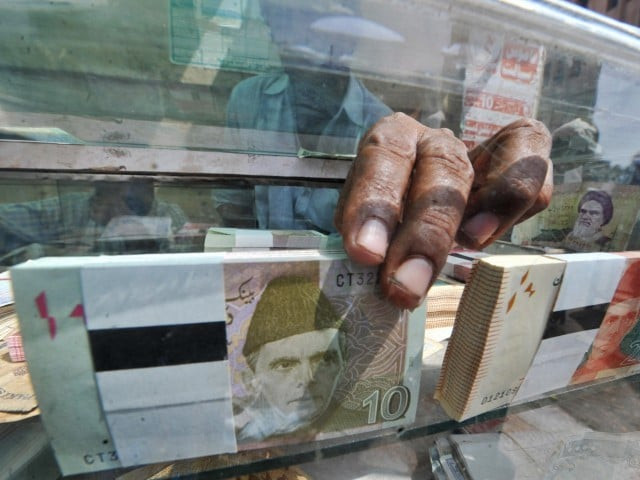Banks’ combined profit amounts to Rs148b for Jan-Sep
Prefer risk-free govt papers over extending credit to private sector

PHOTO: AFP
Although the regulator squeezed the banking spread - difference between lending and deposit rates - by decreasing the benchmark interest rate, banks still managed to grow their bottom lines by limiting lending: their combined profits for the first nine months of 2015 amounted to Rs148 billion, up 28.7% from earnings recorded in Jan-Sept 2014.
Challenges
With inflation on the downward slope partly because of declining global oil prices, the central bank cut the benchmark interest rate by as much as 3.5% in 2015. This squeezed the difference between average lending and deposit rates for banks, resulting in a decade-low banking spread of 5.28% in November.
In addition, the government also introduced changes in tax rates that banks pay on different avenues of income. Instead of paying taxes at rates ranging from 10% to 25% on different sources of income, such as dividends and income from mutual funds, banks had to pay a uniform tax rate of 35% on all sources of banking incomes June onwards. This dented the bottom lines of banks, as their overall tax liability increased in 2015.
Similarly, the imposition of a one-off ‘super tax’ - applicable at 4% of the net income recorded in 2014 - resulted in banks booking a higher tax charge in the second quarter of 2015. This tax alone wiped off 2.5%?3% from the bottom lines of banks that earned in excess of Rs500 million in 2014, according to BMA Capital research analyst Jehanzaib Zafar.
Another challenge that banks faced in 2015 arose out of the imposition of a levy on banking transactions carried out by non-filers of income tax returns. Every transaction exceeding Rs50,000 in a day was subjected to a 0.6% tax (later reduced to 0.3%) to increase the number of filers.
However, instead of bringing people into the tax net, the measure proved counterproductive in the short term at least. From Rs9.15 trillion at the beginning of the fiscal year in July, total deposits actually had decreased 1.2% by the end of November, according to data released by the State Bank of Pakistan (SBP).
BMA Capital believes the drop in deposits was a “knee-jerk” reaction to the newly imposed levy on transactions. “We downplay any long-term effects of this tax and expect the deposits to return to the banking channels eventually due to the unavailability of any alternate channels,” Zafar added.
Investments
Banks dealt with shrinking spreads by enhancing their exposure to riskless government papers. While advances grew only 5% in the first 11 months of 2015, the rise in investments clocked up at 30%.
However, the trend changed a little by the end of the year, as banks seemed more inclined towards lending during November. “Although a major deposit proportion remained parked in risk-free assets, the advances-to-deposits ratio improved slightly to 51%,” he said.
There is some improvement in long-term finance that has gone up 20% year on year, but a heavy retirement of running finance is “masking the overall growth in advances,” Zafar said.
Meanwhile, banking sector stocks put up the second worst performance (-16%) on the Karachi share market in 2015. According to Topline Securities, banking shares look attractive because of their current valuation. “The banking sector’s low valuations are not fully justified given China-Pakistan Economic Corridor led expected credit growth”.
Published in The Express Tribune, January 2nd, 2016.
Like Business on Facebook, follow @TribuneBiz on Twitter to stay informed and join in the conversation.



















COMMENTS
Comments are moderated and generally will be posted if they are on-topic and not abusive.
For more information, please see our Comments FAQ